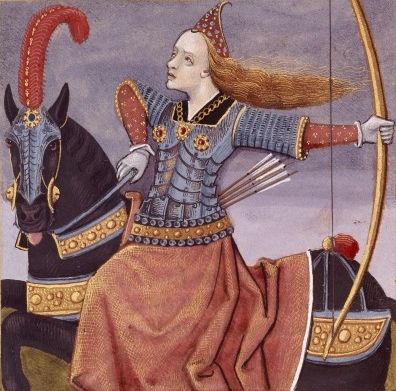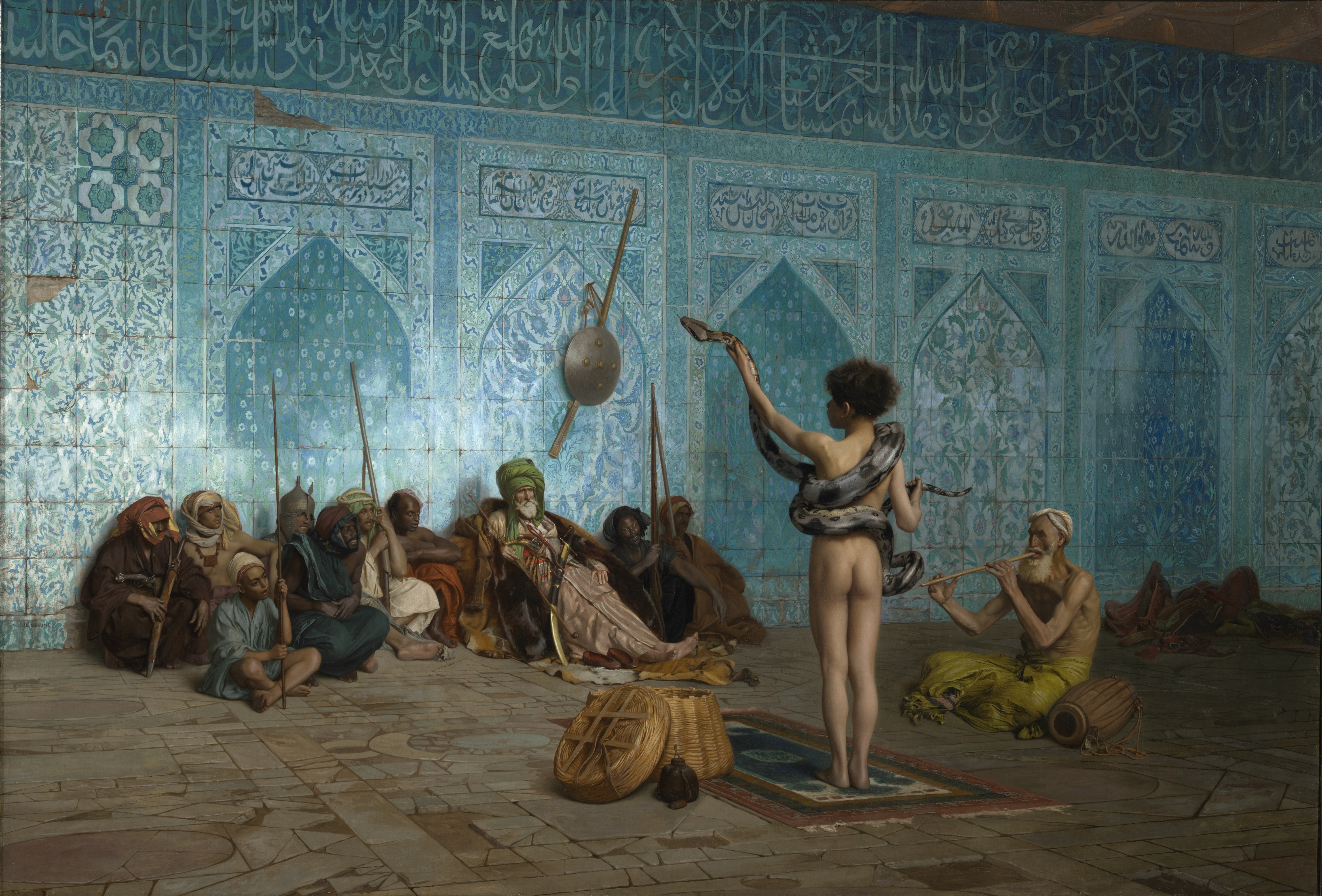|
Eirene (artist)
Eirene or Irene ( el, Ειρήνη) was an ancient Greek artist described by Pliny the Elder in the 1st century. She was the daughter of a painter, and created an image of a girl that was housed at Eleusis. One of the six female artists of antiquity mentioned in Pliny the Elder's '' Natural History'' (XL.147-148) in A.D. 77: Timarete, Irene, Calypso, Aristarete, Iaia, Olympias. During the Renaissance, Boccaccio, a 14th-century humanist, included Eirene in ''De mulieribus claris'' (Latin for ''On Famous Women''). However, in this telling Boccaccio apparently conflated many of the women described by Pliny and attributed many more works to Eirene. Some other paintings he credits to Eirene are an older Calypso, the gladiator Theodorus, and a famous dancer called Alcisthenes.Virginia Brown's translation of Giovanni Boccaccio’s Famous Women, pp 123 - 124; Harvard University Press, 2001; See also * Women artists Sources References *Pliny the Elder. ''Naturalis historia'', XXXV. ... [...More Info...] [...Related Items...] OR: [Wikipedia] [Google] [Baidu] |
Eirene - De Mulieribus Claris (BNF Fr
{{disambiguation, given name ...
Eirene may refer to: * Eirene (artist), 1st-century Greek artist * Eirene (daughter of Poseidon), in Greek mythology * ''Eirene'' (genus), a genus of hydrozoans in the family Eirenidae * Eirene (goddess), the Greek personification of peace * Eirene (moon), a moon of Jupiter * Eirene (''Rome'' character) * Eirene of Montferrat, Byzantine Empress consort * Eirene Mort (1879–1977), Australian artist and writer * Eirene White, Baroness White, (1909–1999), British politician See also * Irene (other) Irene is a name derived from εἰρήνη (eirēnē), the Greek for "peace". Irene, and related names, may refer to: * Irene (given name) Places * Irene, Gauteng, South Africa * Irene, South Dakota, United States * Irene, Texas, United States ... [...More Info...] [...Related Items...] OR: [Wikipedia] [Google] [Baidu] |
De Mulieribus Claris
''De Mulieribus Claris'' or ''De Claris Mulieribus'' (Latin for "Concerning Famous Women") is a collection of biographies of historical and mythological women by the Florentine author Giovanni Boccaccio, composed in Latin prose in 1361–1362. It is notable as the first collection devoted exclusively to biographies of women in post-ancient Western literature. At the same time as he was writing ''On Famous Women'', Boccaccio also compiled a collection of biographies of famous men,'' De Casibus Virorum Illustrium'' (''On the Fates of Famous Men''). Purpose Boccaccio claimed to have written the 106 biographies for the posterity of the women who were considered renowned, whether good or bad. He believed that recounting the deeds of certain women who may have been wicked would be offset by the exhortations to virtue by the deeds of good women. He writes in his presentation of this combination of all types of women that he hoped it would encourage virtue and curb vice. Overview The ... [...More Info...] [...Related Items...] OR: [Wikipedia] [Google] [Baidu] |
Greek Women Painters
Greek may refer to: Greece Anything of, from, or related to Greece, a country in Southern Europe: *Greeks, an ethnic group. *Greek language, a branch of the Indo-European language family. **Proto-Greek language, the assumed last common ancestor of all known varieties of Greek. **Mycenaean Greek, most ancient attested form of the language (16th to 11th centuries BC). **Ancient Greek, forms of the language used c. 1000–330 BC. **Koine Greek, common form of Greek spoken and written during Classical antiquity. **Medieval Greek or Byzantine Language, language used between the Middle Ages and the Ottoman conquest of Constantinople. **Modern Greek, varieties spoken in the modern era (from 1453 AD). *Greek alphabet, script used to write the Greek language. *Greek Orthodox Church, several Churches of the Eastern Orthodox Church. *Ancient Greece, the ancient civilization before the end of Antiquity. *Old Greek, the language as spoken from Late Antiquity to around 1500 AD. Other uses * '' ... [...More Info...] [...Related Items...] OR: [Wikipedia] [Google] [Baidu] |
Ancient Greek Painters
Ancient history is a time period from the beginning of writing and recorded human history to as far as late antiquity. The span of recorded history is roughly 5,000 years, beginning with the Sumerian cuneiform script. Ancient history covers all continents inhabited by humans in the period 3000 BCAD 500. The three-age system periodizes ancient history into the Stone Age, the Bronze Age, and the Iron Age, with recorded history generally considered to begin with the Bronze Age. The start and end of the three ages varies between world regions. In many regions the Bronze Age is generally considered to begin a few centuries prior to 3000 BC, while the end of the Iron Age varies from the early first millennium BC in some regions to the late first millennium AD in others. During the time period of ancient history, the world population was already exponentially increasing due to the Neolithic Revolution, which was in full progress. While in 10,000 BC, the world population stood at ... [...More Info...] [...Related Items...] OR: [Wikipedia] [Google] [Baidu] |
Ancient Greek Women Artists
Ancient history is a time period from the beginning of writing and recorded human history to as far as late antiquity. The span of recorded history is roughly 5,000 years, beginning with the Sumerian cuneiform script. Ancient history covers all continents inhabited by humans in the period 3000 BCAD 500. The three-age system periodizes ancient history into the Stone Age, the Bronze Age, and the Iron Age, with recorded history generally considered to begin with the Bronze Age. The start and end of the three ages varies between world regions. In many regions the Bronze Age is generally considered to begin a few centuries prior to 3000 BC, while the end of the Iron Age varies from the early first millennium BC in some regions to the late first millennium AD in others. During the time period of ancient history, the world population was already exponentially increasing due to the Neolithic Revolution, which was in full progress. While in 10,000 BC, the world population stood ... [...More Info...] [...Related Items...] OR: [Wikipedia] [Google] [Baidu] |
Linda Nochlin
Linda Nochlin (''née'' Weinberg; January 30, 1931 – October 29, 2017) was an American art historian, Lila Acheson Wallace Professor Emerita of Modern Art at New York University Institute of Fine Arts, and writer. As a prominent feminist art historian, she became well known for her pioneering 1971 article "Why Have There Been No Great Women Artists?" published by ''ARTnews''.Nochlin, Linda. "Why Have There Been No Great Women Artists?" ''ARTnews'' January 1971: 22-39, 67-71. Early life and education Linda Natalie Weinberg was born the daughter of Jules Weinberg and Elka Heller (Weinberg) in Brooklyn, New York and raised in the borough's Crown Heights neighborhood. She attended Brooklyn Ethical Cultural School, a progressive grammar school. She received her B.A. in Philosophy from Vassar College in 1951, her M.A. in English from Columbia University in 1952, and her Ph.D in the history of art from the Institute of Fine Arts at New York University in 1963. Academic career After ... [...More Info...] [...Related Items...] OR: [Wikipedia] [Google] [Baidu] |
Women Artists
The absence of women from the canon of Western culture, Western Art history, art has been a subject of inquiry and reconsideration since the early 1970s. Linda Nochlin's influential 1971 essay, "Why Have There Been No Great Women Artists?, Why Have There Been No Great Women Artists?" examined the social and institutional barriers that blocked most women from entering artistic professions throughout history, prompted a new focus on women artists, their art and experiences, and contributed inspiration to the Feminist art movement in the United States, Feminist art movement. Although women artists have been involved in the making of art throughout history, their work, when compared to that of their male counterparts, has been often obfuscated, overlooked and undervalued. The Western canon has historically valued men's work over womens' and attached gendered stereotypes to certain media, such as Textile arts, textile or fiber arts, to be primarily associated with women.Aktins, Robe ... [...More Info...] [...Related Items...] OR: [Wikipedia] [Google] [Baidu] |
On Famous Women
''De Mulieribus Claris'' or ''De Claris Mulieribus'' (Latin for "Concerning Famous Women") is a collection of biographies of historical and mythological women by the Florentine author Giovanni Boccaccio, composed in Latin prose in 1361–1362. It is notable as the first collection devoted exclusively to biographies of women in post-ancient Western literature. At the same time as he was writing ''On Famous Women'', Boccaccio also compiled a collection of biographies of famous men,'' De Casibus Virorum Illustrium'' (''On the Fates of Famous Men''). Purpose Boccaccio claimed to have written the 106 biographies for the posterity of the women who were considered renowned, whether good or bad. He believed that recounting the deeds of certain women who may have been wicked would be offset by the exhortations to virtue by the deeds of good women. He writes in his presentation of this combination of all types of women that he hoped it would encourage virtue and curb vice. Overview The ... [...More Info...] [...Related Items...] OR: [Wikipedia] [Google] [Baidu] |
Giovanni Boccaccio
Giovanni Boccaccio (, , ; 16 June 1313 – 21 December 1375) was an Italian writer, poet, correspondent of Petrarch, and an important Renaissance humanist. Born in the town of Certaldo, he became so well known as a writer that he was sometimes simply known as "the Certaldese" and one of the most important figures in the European literary panorama of the fourteenth century. Some scholars (including Vittore Branca) define him as the greatest European prose writer of his time, a versatile writer who amalgamated different literary trends and genres, making them converge in original works, thanks to a creative activity exercised under the banner of experimentalism. His most notable works are ''The Decameron'', a collection of short stories which in the following centuries was a determining element for the Italian literary tradition, especially after Pietro Bembo elevated the Boccaccian style to a model of Italian prose in the sixteenth century, and ''On Famous Women''. He wrot ... [...More Info...] [...Related Items...] OR: [Wikipedia] [Google] [Baidu] |
Ancient Greece
Ancient Greece ( el, Ἑλλάς, Hellás) was a northeastern Mediterranean civilization, existing from the Greek Dark Ages of the 12th–9th centuries BC to the end of classical antiquity ( AD 600), that comprised a loose collection of culturally and linguistically related city-states and other territories. Most of these regions were officially unified only once, for 13 years, under Alexander the Great's empire from 336 to 323 BC (though this excludes a number of Greek city-states free from Alexander's jurisdiction in the western Mediterranean, around the Black Sea, Cyprus, and Cyrenaica). In Western history, the era of classical antiquity was immediately followed by the Early Middle Ages and the Byzantine period. Roughly three centuries after the Late Bronze Age collapse of Mycenaean Greece, Greek urban poleis began to form in the 8th century BC, ushering in the Archaic period and the colonization of the Mediterranean Basin. This was followed by the age of Classical G ... [...More Info...] [...Related Items...] OR: [Wikipedia] [Google] [Baidu] |
Iaia
Iaia of Cyzicus ( el, Ιαία της Κυζίκου), sometimes (incorrectly) called Lala or Lalla, or rendered as Laia or Maia, was a Roman painter, born in Greece, and relatively exceptional for being a woman artist. She was alive during the time of Marcus Terentius Varro (116–27 BC). In ''De Mulieribus Claris'', his book of women's biographies, Boccaccio refers to her as "Marcia", possibly confusing her with the Vestal Virgin of that name. Most of her paintings are said to have been of women. Pliny attributes to her a large panel painting of an old woman and a self-portrait. She was said to have worked faster and painted better than her male competitors, Sopolis and Dionysius, which enabled her to earn more than them. Life Born in Cyzicus, Iaia was a famous painter and ivory carver. She probably came to Rome to meet the demand for art there in the late Roman Republic. Iaia remained unmarried all her life. Influence on culture Iaia is one of several female artists of an ... [...More Info...] [...Related Items...] OR: [Wikipedia] [Google] [Baidu] |
Aristarete
Aristarete (Greek: Ἀ''ρισταρέτη'') (or Aristareté, Aristareta) was an ancient Greek painter. Little is known about her, including where and when she lived. Although none of her works are known to be extant, Pliny the Elder's '' Natural History'' contains mention of hers depicting Asclepius, the Greek god of medicine. Pliny includes Aristarete in a list of six ancient Greek female artists, among which Timarete, Irene, and Calypso. They are mentioned later in Boccaccio's ''De mulieribus claris''. He also writes that Aristarete was trained by her father, Nearchos Nearchus or Nearchos ( el, Νέαρχος; – 300 BC) was one of the Greeks, Greek officers, a navarch, in the army of Alexander the Great. He is known for his celebrated expeditionary voyage starting from the Indus river, Indus River, through t .... Account by Pliny The standard Teubner edition of Pliny the Elder's Natural History mentions the painter Calypso in the following passage from the 147th cha ... [...More Info...] [...Related Items...] OR: [Wikipedia] [Google] [Baidu] |
.jpg)





_School_-_Boccaccio_(1313–1375)_(Giovanni_Boccaccio)_-_355512_-_National_Trust.jpg)
.jpg)
